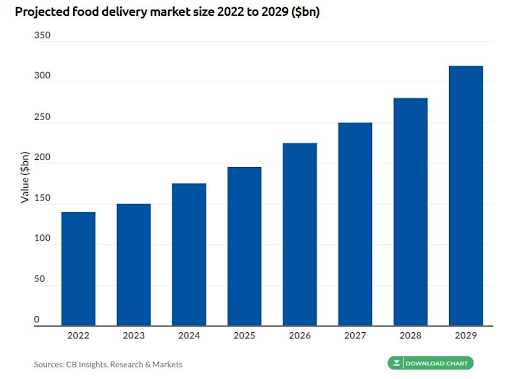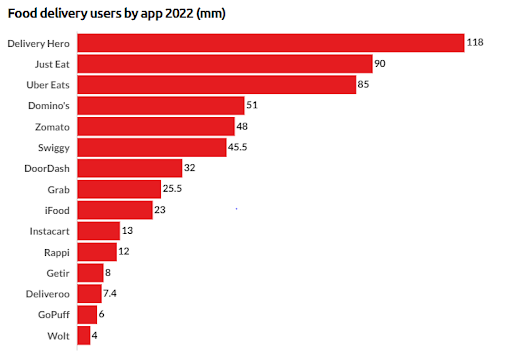A Quick Guide For Food Delivery App Development
by Sachleen Singh valueappzQuick Summary: Have you ever thought of food delivery app development and got stuck in the middle? Was it because of a lack of planning or market understanding? Whatever the reason, our guide will give you a complete insight into what goes into making a food delivery app.
The on-demand food delivery app industry is facing rapid change. Everything from fast food to healthy meals has gone online. A customer prefers to order food online rather than spend time in the kitchen.
Therefore, mobile apps act as the best solution for them to fulfill their food cravings.
These food-ordering apps are largely focused on convenience and customer experience. Users can quickly search for their favorite food, avail of special deals, and get food delivered from a local restaurant.
Further, if you own national chains of your restaurant like Domino’s, you could build a restaurant-to-customer app and ensure that the audience who does not prefer to dine in can still enjoy your food.
If you want to enter the food delivery business, you must build user-friendly apps for easy online ordering. For instance, the best food delivery service, like DoorDash, provides features like customization, a wide range of food options, discovering local restaurants, and much more for a smooth online food delivery experience.
Before you build a roadmap for the best food delivery service, you must understand how customers think and where this market is headed.
Key Takeaways
- With customers increasingly preferring to purchase food online, the market for food delivery apps is expanding quickly.
- Restaurant-to-consumer delivery and platform-to-consumer delivery are the two main categories of on-demand food delivery apps.
- Easy order placement, rapid payment choices, real-time order tracking, order customization, in-app messaging, rating and reviews, geolocation, user profiles, restaurant and dish search, and push notifications are all essential elements for a food delivery app.
- Establishing the proper logistical system, selecting the best food delivery app development team, conducting industry research, creating an appealing design, and attracting users are all steps in the process of creating a meal delivery app.
Changing Customer Demand and the Market
On-demand food delivery apps are not a decade-old concept; instead, the first online food ordering service started in 1995, known as World Wide Waiter (now known as waiter.com). Since then, this market has seen an uphill in its growth.
But what makes the best food delivery apps attractive and addictive for users?
The first reason, of course, would be the convenience, but other factors like discounts, unlimited options, easy payments, etc., are also responsible for its growth.
Such features have made food apps so addictive that users now mostly prefer ordering food online rather than paying a visit to the restaurant.
The food delivery app industry is expected to reach $320 billion by 2029. Further, 60% of restaurant owners believe that offering food delivery has added great sales to their business.

Types of On-Demand Food Delivery Apps
Models of food delivery apps can be divided into two based on the number of restaurants they provide.
These include restaurant-to-consumer delivery and platform-to-consumer delivery.
1. Restaurant-to-Consumer Delivery
Such a model is used by restaurants that provide a digital version of their restaurants. It aims at providing food to the consumers from a particular restaurant through their application.
One of the best examples of it is Domino’s. Though Domino’s is available on other platforms like UberEats and more, it also has its own food delivery app, where customers can directly place an order and receive it straight from Domino’s (hence, not including any third party).
2. Platform-to-Consumer Delivery
The Aggregator model has already acquired the food delivery market by providing services at the convenience of consumers. Platform-to-consumer delivery apps bring multiple local restaurants on one platform, where they can place their menus, discounts, and offers. Furthermore, the users can search for restaurants, place orders, and get them delivered quickly.
The best examples of food delivery services are UberEats, DoorDash, and Grubhub, which have millions of users on their respective applications. The aggregator model gives a variety of options to choose from, making it so lovable among the audience.
Sponsor Ads
Created on Jun 28th 2023 01:48. Viewed 158 times.




